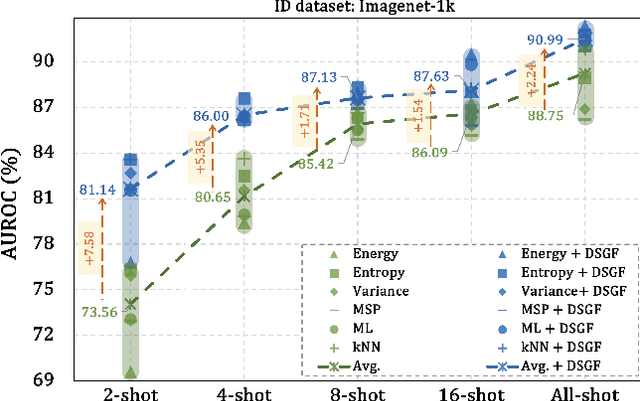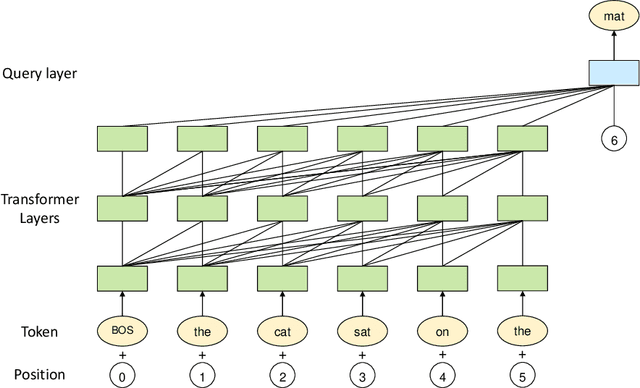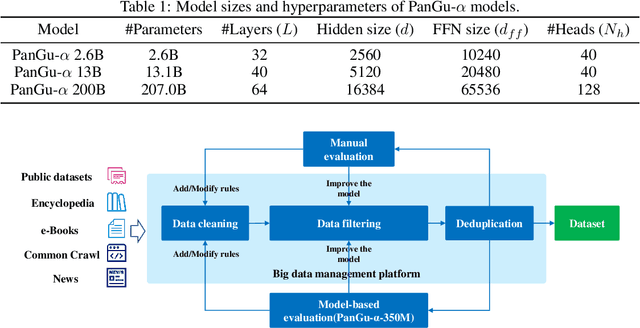Yifan Yao
KORGym: A Dynamic Game Platform for LLM Reasoning Evaluation
May 21, 2025Abstract:Recent advancements in large language models (LLMs) underscore the need for more comprehensive evaluation methods to accurately assess their reasoning capabilities. Existing benchmarks are often domain-specific and thus cannot fully capture an LLM's general reasoning potential. To address this limitation, we introduce the Knowledge Orthogonal Reasoning Gymnasium (KORGym), a dynamic evaluation platform inspired by KOR-Bench and Gymnasium. KORGym offers over fifty games in either textual or visual formats and supports interactive, multi-turn assessments with reinforcement learning scenarios. Using KORGym, we conduct extensive experiments on 19 LLMs and 8 VLMs, revealing consistent reasoning patterns within model families and demonstrating the superior performance of closed-source models. Further analysis examines the effects of modality, reasoning strategies, reinforcement learning techniques, and response length on model performance. We expect KORGym to become a valuable resource for advancing LLM reasoning research and developing evaluation methodologies suited to complex, interactive environments.
IV-Bench: A Benchmark for Image-Grounded Video Perception and Reasoning in Multimodal LLMs
Apr 21, 2025Abstract:Existing evaluation frameworks for Multimodal Large Language Models (MLLMs) primarily focus on image reasoning or general video understanding tasks, largely overlooking the significant role of image context in video comprehension. To bridge this gap, we propose IV-Bench, the first comprehensive benchmark for evaluating Image-Grounded Video Perception and Reasoning. IV-Bench consists of 967 videos paired with 2,585 meticulously annotated image-text queries across 13 tasks (7 perception and 6 reasoning tasks) and 5 representative categories. Extensive evaluations of state-of-the-art open-source (e.g., InternVL2.5, Qwen2.5-VL) and closed-source (e.g., GPT-4o, Gemini2-Flash and Gemini2-Pro) MLLMs demonstrate that current models substantially underperform in image-grounded video Perception and Reasoning, merely achieving at most 28.9% accuracy. Further analysis reveals key factors influencing model performance on IV-Bench, including inference pattern, frame number, and resolution. Additionally, through a simple data synthesis approach, we demonstratethe challenges of IV- Bench extend beyond merely aligning the data format in the training proecss. These findings collectively provide valuable insights for future research. Our codes and data are released in https://github.com/multimodal-art-projection/IV-Bench.
SuperGPQA: Scaling LLM Evaluation across 285 Graduate Disciplines
Feb 20, 2025Abstract:Large language models (LLMs) have demonstrated remarkable proficiency in mainstream academic disciplines such as mathematics, physics, and computer science. However, human knowledge encompasses over 200 specialized disciplines, far exceeding the scope of existing benchmarks. The capabilities of LLMs in many of these specialized fields-particularly in light industry, agriculture, and service-oriented disciplines-remain inadequately evaluated. To address this gap, we present SuperGPQA, a comprehensive benchmark that evaluates graduate-level knowledge and reasoning capabilities across 285 disciplines. Our benchmark employs a novel Human-LLM collaborative filtering mechanism to eliminate trivial or ambiguous questions through iterative refinement based on both LLM responses and expert feedback. Our experimental results reveal significant room for improvement in the performance of current state-of-the-art LLMs across diverse knowledge domains (e.g., the reasoning-focused model DeepSeek-R1 achieved the highest accuracy of 61.82% on SuperGPQA), highlighting the considerable gap between current model capabilities and artificial general intelligence. Additionally, we present comprehensive insights from our management of a large-scale annotation process, involving over 80 expert annotators and an interactive Human-LLM collaborative system, offering valuable methodological guidance for future research initiatives of comparable scope.
A Survey on Large Language Model Security and Privacy: The Good, the Bad, and the Ugly
Dec 04, 2023Abstract:Large Language Models (LLMs), such as GPT-3 and BERT, have revolutionized natural language understanding and generation. They possess deep language comprehension, human-like text generation capabilities, contextual awareness, and robust problem-solving skills, making them invaluable in various domains (e.g., search engines, customer support, translation). In the meantime, LLMs have also gained traction in the security community, revealing security vulnerabilities and showcasing their potential in security-related tasks. This paper explores the intersection of LLMs with security and privacy. Specifically, we investigate how LLMs positively impact security and privacy, potential risks and threats associated with their use, and inherent vulnerabilities within LLMs. Through a comprehensive literature review, the paper categorizes findings into "The Good" (beneficial LLM applications), "The Bad" (offensive applications), and "The Ugly" (vulnerabilities and their defenses). We have some interesting findings. For example, LLMs have proven to enhance code and data security, outperforming traditional methods. However, they can also be harnessed for various attacks (particularly user-level attacks) due to their human-like reasoning abilities. We have identified areas that require further research efforts. For example, research on model and parameter extraction attacks is limited and often theoretical, hindered by LLM parameter scale and confidentiality. Safe instruction tuning, a recent development, requires more exploration. We hope that our work can shed light on the LLMs' potential to both bolster and jeopardize cybersecurity.
Towards Few-shot Out-of-Distribution Detection
Nov 20, 2023



Abstract:Out-of-distribution (OOD) detection is critical for ensuring the reliability of open-world intelligent systems. Despite the notable advancements in existing OOD detection methodologies, our study identifies a significant performance drop under the scarcity of training samples. In this context, we introduce a novel few-shot OOD detection benchmark, carefully constructed to address this gap. Our empirical analysis reveals the superiority of ParameterEfficient Fine-Tuning (PEFT) strategies, such as visual prompt tuning and visual adapter tuning, over conventional techniques, including fully fine-tuning and linear probing tuning in the few-shot OOD detection task. Recognizing some crucial information from the pre-trained model, which is pivotal for OOD detection, may be lost during the fine-tuning process, we propose a method termed DomainSpecific and General Knowledge Fusion (DSGF). This approach is designed to be compatible with diverse fine-tuning frameworks. Our experiments show that the integration of DSGF significantly enhances the few-shot OOD detection capabilities across various methods and fine-tuning methodologies, including fully fine-tuning, visual adapter tuning, and visual prompt tuning. The code will be released.
PanGu-$α$: Large-scale Autoregressive Pretrained Chinese Language Models with Auto-parallel Computation
Apr 26, 2021



Abstract:Large-scale Pretrained Language Models (PLMs) have become the new paradigm for Natural Language Processing (NLP). PLMs with hundreds of billions parameters such as GPT-3 have demonstrated strong performances on natural language understanding and generation with \textit{few-shot in-context} learning. In this work, we present our practice on training large-scale autoregressive language models named PanGu-$\alpha$, with up to 200 billion parameters. PanGu-$\alpha$ is developed under the MindSpore and trained on a cluster of 2048 Ascend 910 AI processors. The training parallelism strategy is implemented based on MindSpore Auto-parallel, which composes five parallelism dimensions to scale the training task to 2048 processors efficiently, including data parallelism, op-level model parallelism, pipeline model parallelism, optimizer model parallelism and rematerialization. To enhance the generalization ability of PanGu-$\alpha$, we collect 1.1TB high-quality Chinese data from a wide range of domains to pretrain the model. We empirically test the generation ability of PanGu-$\alpha$ in various scenarios including text summarization, question answering, dialogue generation, etc. Moreover, we investigate the effect of model scales on the few-shot performances across a broad range of Chinese NLP tasks. The experimental results demonstrate the superior capabilities of PanGu-$\alpha$ in performing various tasks under few-shot or zero-shot settings.
Learning Transferable Kinematic Dictionary for 3D Human Pose and Shape Reconstruction
Apr 21, 2021



Abstract:Estimating 3D human pose and shape from a single image is highly under-constrained. To address this ambiguity, we propose a novel prior, namely kinematic dictionary, which explicitly regularizes the solution space of relative 3D rotations of human joints in the kinematic tree. Integrated with a statistical human model and a deep neural network, our method achieves end-to-end 3D reconstruction without the need of using any shape annotations during the training of neural networks. The kinematic dictionary bridges the gap between in-the-wild images and 3D datasets, and thus facilitates end-to-end training across all types of datasets. The proposed method achieves competitive results on large-scale datasets including Human3.6M, MPI-INF-3DHP, and LSP, while running in real-time given the human bounding boxes.
 Add to Chrome
Add to Chrome Add to Firefox
Add to Firefox Add to Edge
Add to Edge